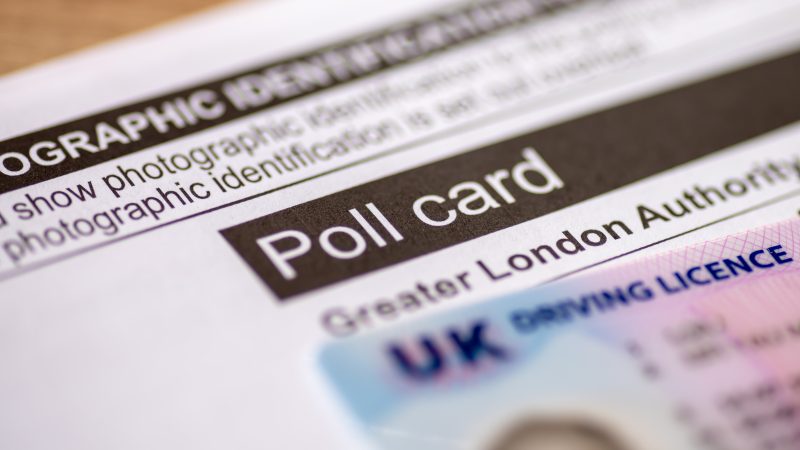
In the run-up to every set of May elections when there isn’t a simultaneous general election, I write a preview of the local elections, including historical data so we can benchmark Labour’s performance. I’ve been doing this since 2011, so this is the first year that I have written this preview while Labour has been in government nationally.
The set of elections taking place on Thursday 1 May is unexpectedly small. This is because elections in seven county councils (East Sussex, Essex, Hampshire, Norfolk, Suffolk, Surrey, and West Sussex) and two unitary councils (Isle of Wight and Thurrock) have been cancelled due to forthcoming local government reorganisation.
The rump of elections that are still going ahead covers a mere 1,757 councillors in just 25 councils, compared to 2,592 councillors in 107 councils in 2024 and 8,500 councillors in 2023.
The council seats up for election consist of:
- All the councillors (a total of 919) in 14 county councils.
- All the councillors (a total of 667) in 8 unitary councils.
- All 55 councillors in Doncaster Metropolitan Borough Council.
- All 100 councillors in the City of London Corporation.
- All 16 councillors in the Isles of Scilly Council.
There are also elections for four combined authority mayors (Cambridgeshire and Peterborough, Greater Lincolnshire, Hull and East Yorkshire, and West of England), and two single local authority Mayors (Doncaster and North Tyneside).
Most of the council seats were last contested in May 2021, at the same time as another set of elections delayed from May 2020 due to Covid. This factor and the cancellations due to local government reorganisation make it very difficult to make clear comparisons with the last time the seats were fought.
The 2021 elections had been held at a point Labour was only just beginning its recovery from the years of Jeremy Corbyn’s leadership and consequently these were a strong set of results for the Tories. They gained a net 235 councillors and a net 13 councils whilst Labour lost a net 327 councillors and lost control of a net 8 councils. The projected national vote share calculated by the BBC was 36% Conservative, 29% Labour, 17% Lib Dem.
Exact seat numbers are difficult to agree on due to by-elections, defections and boundary changes but Tories are defending the lion’s share of the seats (perhaps 986), Labour only 297, the Lib Dems 231, the Greens 39 and Reform 8 (all obtained through defections).
Control of the councils up for election is a more exact science: only Doncaster is Labour controlled, Cambridgeshire, Durham, and Oxfordshire are No Overall Control, the City of London and Isles of Scilly only have Independent councillors, and all the remaining 19 councils are Conservative controlled.
For more from LabourList, subscribe to our daily newsletter roundup of all things Labour – and follow us on Bluesky, WhatsApp, Threads, X or Facebook.
It is important to note that the councils up for election are mainly in more rural shire areas where Labour is always relatively weak. With the contest primarily in the Tories’ shire heartlands, this is the first chance since the General Election to see if the Tories have recovered there and the first opportunity we have to see how the Tory vs. Reform battle is playing out on the right.
This context of very few Labour defensive battles and the dramatic decline in Tory fortunes since 2021 means that it is difficult to see the results leading to anything other than significant Tory losses in terms of councillors and councils controlled.
However, current polling suggests Labour is also doing worse in the opinion polls than in 2021, and Reform is riding high when it didn’t even exist then, so Tory losses are likely to flow more towards Reform, the Lib Dems consolidating their General Election gains, and the Greens who will be seeking to build on their isolated rural gains last July. It’s worth noting that this set of elections in the cycle saw Reform’s predecessor UKIP hit 22% of the vote in 2013.
Four of the Mayoral contests are Labour defences (Cambridgeshire and Peterborough, West of England, Doncaster and North Tyneside), none of which are easy to predict, particularly as it’s only in Doncaster that the incumbent is standing for re-election, and since 2021 the transferable voting system has been abolished in favour of First Past The Post, which helps the Tories in areas with multiple strong progressive candidates. Labour only won Cambridgeshire & Peterborough on second preference transfers in 2021, it would have been won by the Tories under FPTP. Greater Lincolnshire and Hull and East Yorkshire are brand new Mayoral roles, and Reform will heavily target the former as well as Doncaster.
On paper, the councils Labour has most chance of gaining overall control in are Durham and Northumberland (both of which have had significant ward boundary changes), followed by Lancashire (which has been Tory-held since 2009) and Derbyshire, though even to go as far as that you would be looking at an authority (Derbyshire) where Labour only starts with 16 out of 64 seats. But the possibility of gains of control in the current polling climate looks unlikely and Reform will also be putting a lot of effort into all these councils.
The volatility of the party system with the growth in minor parties like the Greens and Reform means that many councillors could be elected on very low vote shares, and outcomes could be determined at the point of publication of who has been nominated as the pattern of which parties stand where will have a huge impact, for example on whether the right-wing vote in a ward is split between the Conservatives and Reform, or indeed an independent, or consolidates behind just one candidate.
There are at least four ways of measuring Labour’s national performance: national projected vote share (which the BBC calculates for the whole country, including areas not voting this year), raw number of councillors, number of councillors gained or lost and number of councils controlled.
Looking first at projected national vote share, the estimated figures the BBC uses are as follows:
2010: 29% (general election result)
2011: 37%
2012: 38%
2013: 29%
2014: 31%
2015: 30% (general election result)
2016: 31%
2017: 27%
2018: 35%
2019: 28%
2020: No election due to Covid
2021: 29%
2022: 35%
2023: 35%
2024: 34%
National vote share in local elections for Labour is always lower than the Westminster opinion polls, because the Greens, Lib Dems and Independents perform better in local than in general elections, when they get squeezed.
Raw number of councillors is the national (Great Britain) total figure, including all the thousands of councillors not up for election (by-elections and changes of party make it difficult to track the exact figure):
2010: 4,831
2011: 5,691
2012: 6,559
2013: 6,850
2014: 7,098
2015: 6,895
2016: 6,859
2017: 6,297
2018: 6,468
2019: 6,323
2021: 5,656
2022: 5,904
2023: 6,415
2024: 6,600
Number of gains or losses. For comparison, here are the years since Margaret Thatcher came to power in which Labour has made net gains (in the other 18 years not listed, we lost seats):
1980: +601 Labour councillors
1981: +988
1983: +8
1984: +88
1986: +13
1988: +76
1989: +35
1990: +284
1991: +584
1993: +111
1994: +44
1995: +1,204
1996: +468
2010: +372
2011: +860
2012: +847
2013: +288
2014: +256
2018: +79
2022: +108
2023: +536
2024: +185
An obvious point from the above list is that Labour has never made net gains while it is in power nationally.
Control of councils. The number of councils that Labour has controlled has been as follows:
2002 – 136
2003 – 103
2004 – 94
2005 – 92
2006 – 75
2007 – 58
2008 – 46
2009 – 37
2010 – 54
2011 – 81
2012 – 114
2013 – 117
2014 – 120
2015 – 114
2016 – 114
2017 – 107
2018 – 105
2019 – 99
2021 – 91
2022 – 96
2023 – 116
2024 – 121
Labour now controls more councils than at any time since 2002, despite many district councils having been abolished during this period.
With a couple of months to go, we know that this set of election results will be small, unpredictable, interesting and messy. It will certainly generate some media and political excitement, but with four years to go until the next General Election, it may not tell us very much about the real electoral fundamentals – for that we will need to wait for the far bigger set of elections in May 2026.
This article was first published in February 2025, and re-published in April.
- SHARE: If you have anything to share that we should be looking into or publishing about this story – or any other topic involving Labour– contact us (strictly anonymously if you wish) at [email protected].
- SUBSCRIBE: Sign up to LabourList’s morning email here for the best briefing on everything Labour, every weekday morning.
- DONATE: If you value our work, please chip in a few pounds a week and become one of our supporters, helping sustain and expand our coverage.
- PARTNER: If you or your organisation might be interested in partnering with us on sponsored events or projects, email [email protected].
- ADVERTISE: If your organisation would like to advertise or run sponsored pieces on LabourList‘s daily newsletter or website, contact our exclusive ad partners Total Politics at [email protected].





More from LabourList
‘Tactical voting helped Labour to win, but it can’t rely on it for victory in 2029’
A radical homelessness agenda could be Rayner’s defining legacy
‘From kitchen tables to high streets: why Labour must champion small businesses’